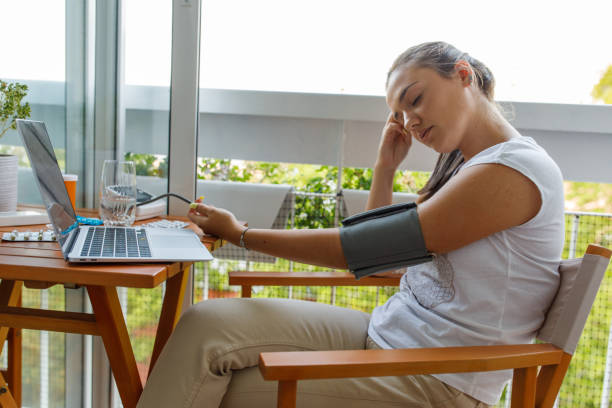Hypotension, also known as low blood pressure, is a condition in which the blood pressure in the arteries is lower than normal. Blood pressure is the force of blood pushing against the walls of the arteries, and it is expressed as two numbers: systolic pressure (the top number) and diastolic pressure (the bottom number). A normal blood pressure reading is around 120/80 mmHg. A reading lower than 90/60 mmHg is considered hypotension.
While low blood pressure may not always cause symptoms, it can lead to dizziness, fainting, and other symptoms in some people. It can also increase the risk of falls and other accidents. In this article, we will discuss the symptoms of hypotension and the treatment options available.
Symptoms of Hypotension
The symptoms of hypotension can vary depending on the cause and the severity of the condition. Some people with low blood pressure may not experience any symptoms at all. However, common symptoms of hypotension include:
Dizziness or lightheadedness: This can occur when blood flow to the brain is decreased, leading to a feeling of unsteadiness or weakness.
Fainting: This can occur when the brain does not receive enough blood, leading to unconsciousness.
Nausea: This can occur as a result of decreased blood flow to the digestive system.
Fatigue: This can occur when the body does not receive enough oxygen and nutrients from the blood.
Blurred vision: This can occur when blood flow to the eyes is decreased.
Confusion: This can occur when the brain does not receive enough oxygen and nutrients from the blood.
Chest pain: This can occur as a result of decreased blood flow to the heart.
Shortness of breath: This can occur when the heart is not able to pump enough blood to meet the body’s needs.
Treatment for Hypotension
The treatment for hypotension will depend on the underlying cause and the severity of the condition. Some people with low blood pressure may not require treatment if their symptoms are mild and infrequent. However, others may require medical intervention to prevent serious complications.
Lifestyle changes: Making lifestyle changes can help improve blood pressure and reduce symptoms. This can include eating a healthy diet, increasing physical activity, reducing stress, and avoiding alcohol and caffeine.
Medications: In some cases, medications can be used to increase blood pressure and improve symptoms. This can include medications to increase heart rate and improve blood flow, as well as medications to treat underlying conditions that can cause low blood pressure.
Intravenous (IV) fluids: In some cases, intravenous fluids may be used to increase blood volume and improve blood pressure. This is often used in people with severe symptoms or in those who are dehydrated.
Surgery: In rare cases, surgery may be necessary to treat underlying conditions that can cause low blood pressure. This can include surgery to correct problems with the heart or blood vessels.
Physical therapy: Physical therapy can help improve blood flow and increase blood pressure. This can include exercises to improve circulation and increase strength, as well as techniques to help relax and reduce stress.
Conclusion
Hypotension, or low blood pressure, can cause a range of symptoms, including dizziness, fainting, and fatigue. The treatment for hypotension will depend on the underlying cause and the severity of the condition. Making lifestyle changes, taking medications, receiving intravenous fluids, undergoing surgery, and participating in physical therapy can all help improve blood pressure and This can lead to a number of symptoms, including dizziness, fainting, fatigue, and a feeling of lightheadedness. While low blood pressure can be a normal and healthy condition in some individuals, it can also be a sign of an underlying health issue.

 Home
Home Health
Health Diet & Nutrition
Diet & Nutrition Living Well
Living Well More
More












